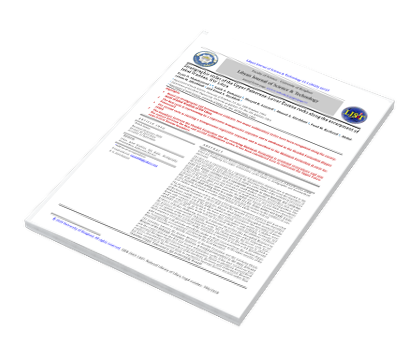Stratigraphic styles of the Upper Paleocene-Lower Eocene rocks along the escarpment of Jabal Waddan, NW Libya
DOI:
https://doi.org/10.37376/ljst.v11i1.2429Abstract
Abstract
Upper Paleocene-Lower Eocene carbonate rocks along the escarpment of Jabal Waddan of NW Libya are displaying two major sedimentary cycles based on stratigraphic and foraminiferal attributes. The first one is representing by a regressive-transgressive sequence and is attributed to the Shurfah Formation. It indicates that during the Thanetian (Upper Paleocene) the deposition of the lower part (the Bú Rá's Member) was in shallow water depths of the subtidal environment under low energy conditions and is represented primarily by Dasycladacean and Codiacean green algae. Their association up-levels with small shallow benthic foraminifera such as miliolids and nonionids, however, may indicate a broad nearshore environment of deposition. The decline of the green algae and the prevalence of small-sized (<1 cm) and thick operculinids witnesses in the middle and upper parts (i.e. the Qaltah and Ammúr members) are characteristic of an open-shelf setting down to a water depth of a few dozen meters and typify warmwater habitats. Evidence of further deepening is indicated up-section by the existence of common shallow shark-teeth in a water depth limited to the photic zone ((<120 m)
The second sedimentary cycle is showing a transgressive-regressive sequence and is ascribed to the Bishimah Formation. It shows that during the Ypresian (Lower Eocene) the deposition of the lower, middle and upper parts (i.e. Khayir, Wadi Zakim and Rawaghah members) of the Bishimah Formation was in the shallow marine neritic environment. The association of alveolinids with common textulariids in the lower and middle members points to a shallow inner shelf with water depth up to 60 m whereas their association with miliolids, nonionids and elphidiids seen at the upper levels indicate innermost shelf or restricted platform conditions. Evidence of further shallowing, however, is indicated up-section (the Rawaghah Member) by the presence of cross-bedded dolomitic limestone and chert nodules which delineate an advanced episode of the second sedimentary cycle. The closing part for the second cycle, however, is attributed to the overlying Al Jir Formation, elsewhere from the study area, in which a thick sequence of evaporates and chalky dolomites is reported to include a rich Spirolina-miliolid assemblage with globular alveolinids similar to those recovered from the studied deposits. Consequently, we recommend considering the Al Jir Formation as the upper member of the Bishimah Formation as originally described in the local literature. The boundary between the Ammúr Member of Shurfah Formation and the overlying khayir Member of the Bishimah Formation, however, is erosional everywhere in the study area and sets the contact between the first and second sedimentary cycles. It has been considered here to represent the Upper Paleocene/Lower Eocene boundary. Based on planktonic foraminiferal evidence, described from the subsurface of the Sirt Basin, the lower part of the khayir Member has been considered in the current study to represent a Ypresian (Lower Eocene) rather than Thanetian (Upper Paleocene) in age as previously thought
Downloads










 LJST Copy rights form
LJST Copy rights form


